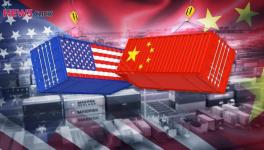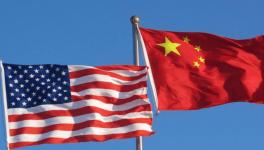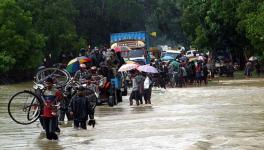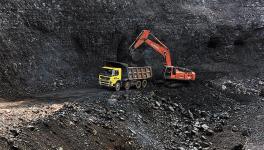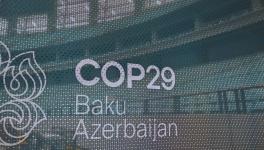COP29 & Climate Crisis: Greed of Rich Vs Needs of People
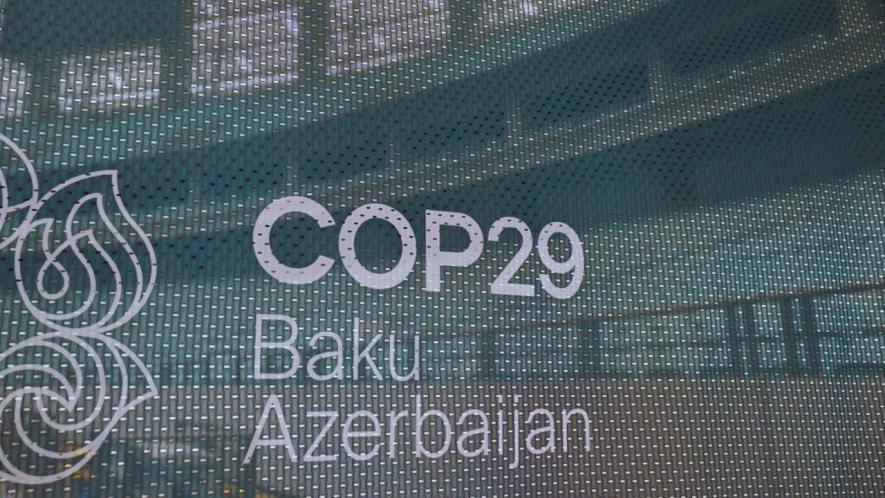
Image Courtesy: Flickr
COP 29, the UN Climate Change Conference, started on November 11 in Baku, Azerbaijan, and is slated to end on November 22. It is taking place under the shadow of significant temperature rises this summer across the globe, and the clear warning of what it means for us. It is also taking place at a time when the US has elected a President, Donald Trump, who, among other things, is also a climate change denier and is unlikely to accept any global consensus in COP 29.
Global warming, even for the countries in the freezing North, is no longer in the realm of scientific debates. It is no longer a bunch of climate scientists sounding warnings about the impact of global warming on all of us. The results are already visible, with temperature records being broken in North India this summer. So also, in Europe.
The target of limiting global temperature rise to 1.5 Degree Celsius is failing, as many regions across the world have already seen a rise of 1.5 Degree C this year. We do not say we have breached the 1.5 Degree C mark because of the technicality that, as per the Intergovernmental Panel on Climate Change (IPCC), temperature rise is computed over a 20-year average. However, to decide 20 years later that we did cross the 1.5 Degree C mark in 2024 is not very helpful for us today.
Therefore, we have to take action today, considering that we are on the verge of irreversible climate change that will make large parts of the world unliveable. It will also cause enormous damage not only to low-lying areas but also to the rest of the world through extreme weather events.
Just to put this in perspective, the world knew a temperature of this magnitude only about 125,000 years back, when modern homo sapiens were leaving Africa, crossing over into Eurasia. That means the world's climate is now tipping over into completely uncharted territory.
High summer temperatures have a huge impact on agriculture, people's livelihood and those forced to work in the fields, factories, or in occupations where people are exposed to heat. The problem is no less severe when much higher than usual winter temperatures lead to the melting of Arctic and Antarctic ice, causing a rapid rise in ocean levels. But what has been striking over the past few years is that rising temperature has also been accompanied by extreme weather events.
The Global North, meaning the US, Canada and Europe, has always believed that global warming is a problem in Africa, Asia and, at worst, Latin America. A Canadian colleague once told me, "Canada could do with a little global warming".
Unfortunately for the people in the Global North, this optimism regarding global warming and climate inaction has shown the rich are not immune to climate change either. The US, the hotbed of climate deniers, has seen 400 climate disasters with losses greater than $1 billion per event since 1980.
Heavy rains, floods, high temperatures, and forest fires are all increasing as we encounter temperature changes that existed only tens of thousands of years ago. We also have the danger of melting permafrost in the polar regions, releasing huge amounts of methane and flipping ocean currents with completely unknown consequences.
The COP29 started with an announcement of an agreement on carbon credits and the hope that it would revive carbon markets. While this path may have had something going for it when the world debated on how to fund green energy strategies, it has very little value today. We already know that most carbon credit projects are only on paper and, at best, help in generating some income for poor countries with forest cover. For example, 90% of carbon credits sold by Verra, the world's biggest certifier of carbon credits, did not reduce any emissions but made a lot of money for Verra.
Back to what we know, that really works. It is replacing the burning of coal, oil, and natural gas with green energy. That means producing electricity for the grid with solar and wind, for which the costs have come down dramatically in the last decades. Also, transport, particularly cars, has seen a rapid increase in battery storage capacity and lower battery prices, making electric vehicles competitive with petrol-driven ones. We still have problems on long haul goods transport by road and replacing processes that release greenhouse gases in certain industrial processes, such as steel, cement, and fertiliser production,
This year has seen major changes. China, the largest current producer of carbon emissions, appears to have reached its peak emissions in 2023-24 though its commitment to meet this target was given as 2030. The magnitude of the investment that China has made in renewables can be seen from its investment in solar power and emerging as the leading supplier of solar cells and panels. India has also expanded its renewable sector significantly and has ambitious plans for the future.
The question earlier was how to store electricity from renewables, given their variable output and our fixed daily demand profile. Building pumped hydro storage for storing variable renewable energy has addressed this problem. The grid-level batteries proposed earlier had high costs and limited storage duration. The Purulia Pumped Storage Project in West Bengal, built under the Left Front government, was the first such scheme in India.
Unlike multi-purpose hydroelectric projects, which cause large submergence of land for storing water for the seasonal needs of irrigation, meeting the daily fluctuations of energy needs requires a much smaller storage and, therefore, very little submergence.
The solar energy sector is clearly leading the energy transition in the world. But what is surprising is not the scale of China building up its solar energy sector but the slow speed of others. According to New York Times (September 16, 2024) China installed a total of 425GW of new solar power. The world without China installed only 162 GW, with the US, the biggest economy in the world, accounting for a measly 33 GW!
India has set itself an ambitious target of 500 GW of renewable energy, with 80% of that planned to come from solar by 2030, which is doable if we invest not simply in solar energy but also our capacity to build the entire supply chain for solar energy. This includes production of silicon wafers and solar cells, not just solar panels and solar plants.
If the electricity sector is the major emitter of greenhouse gases, the next one is the transport sector. Electric vehicles—EVs or Battery Electric Vehicles or BEVs—are at the forefront today in personal transport and in combating greenhouse gas emissions from burning petrol or diesel.
Again, China, with its focus on fundamental technologies, in this case, battery technology, has emerged as the global leader. CATL, which supplies Tesla with its batteries, and BYD, the other major battery maker in China, have emerged not only as the leading battery makers globally but are also now entering the EV market as car makers. BYD has become a major car manufacturer, while CATL is partnering with other manufacturers. CATL is also the major supplier of grid-level battery storage in China.
In India, we have a few indigenous battery suppliers, like Amar Raja Batteries. Indian car makers are also actively entering the EV sector. Again, the laggards seem to be the US, where the Elon Musk mystique blinded them to the reality that 50% of the cost of an electric vehicle is the cost of batteries alone. Musk’s Tesla's focus on the elite market meant missing the mass market segment, and believing that the Chinese battery manufacturers would not be any competition for Tesla. This has meant that Tesla is not a competitor for the mass market, which is by far the bigger segment.
Chinese battery makers along with their cars like BYD, or other Chinese battery makers who have teamed up with car manufacturers, have made heavy inroads into the European market. The response of the US and the EU has been tariff barriers to protect their carmakers at the cost of sacrificing climate goals, even if their own carmakers do not match the Chinese in cost or battery quality.
The COP29 is unlikely to address any of the real issues of how to expand renewable electricity production and its use in transport and other industries. We are not even talking about carbon equity and the rich countries taking some responsibility for the climate damage they have done. We simply want them to take some responsibility for the future. We are no longer willing to give the rich countries a pass, by their shelling out some money in the name of climate finance.
The globe today is teetering on an edge, where irreversible climate changes seem more and more likely. This is not a priority for rich countries. Their focus is on how to defeat Russia militarily in Ukraine, ring-fence China economically, use Israel to control the oil-rich West Asia, even if it means genocide in Palestine, and continue to rule over the rest of the globe. This is the global "Rule-Based order", where only they get to make the rules!
In the case of global warming, the G7 has come up not only against what other countries want, but also against the laws of nature. This is our challenge today: how to build a better world in spite of a handful of rich countries who are willing to sacrifice our future so that they can stretch their world dominance for a few more years. This is the key challenge of COP 29.
Get the latest reports & analysis with people's perspective on Protests, movements & deep analytical videos, discussions of the current affairs in your Telegram app. Subscribe to NewsClick's Telegram channel & get Real-Time updates on stories, as they get published on our website.










